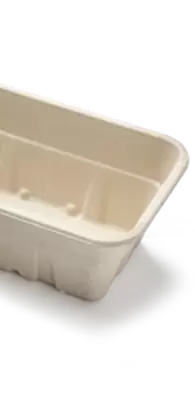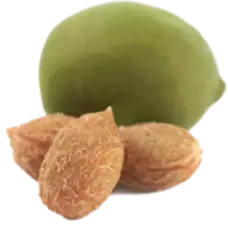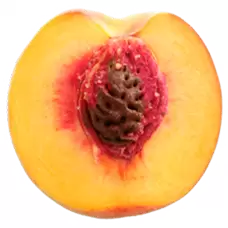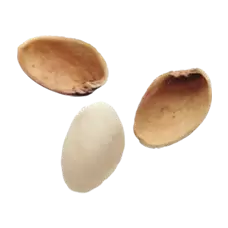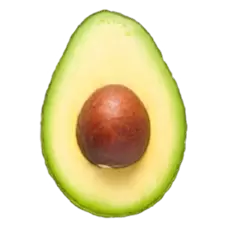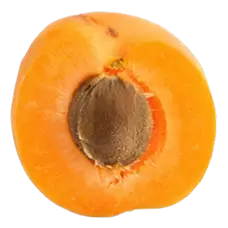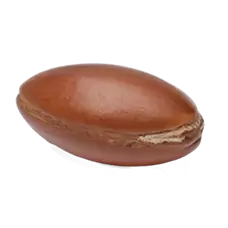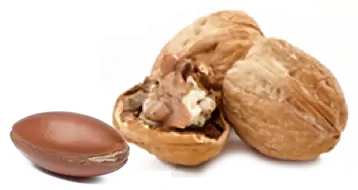Natural Sandblasting Media for Rust Removal
BioPowder.com offers fully natural high-performance abrasives for metal objects and other hard surfaces. Processes to clean tools, vehicle parts and machines require powerful blasting media to rid the metal surface of undesired coverings such as corrosion, paint or lacquer.
Any sanding or blasting application intended for rust removal can be upgraded with plant-based sandblasting abrasives from renewable resources. We are committed to supplying resistant grits in a variety of micron sizes to boost effectiveness of blasting processes. Our sand blasting media for rust removal are fully biodegradable and therefore in line with the highest environmental standards.
Olive Stone and Walnut Shell Blasting Media: Ideal for High-Pressure Blasting
When cleaning ferrous metals from the effects of corrosion, various sandblasting abrasives have conventionally been used. Garnet, plastic, glass or silica – just to name a few; however, they all come with the challenge of disposal at the end of their lifespan. Although reusable, recycling solutions are required. BioPowder offers a new generation of innovative blasting media with no need for resource-intensive recycling: tailored granular abrasives made exclusively from olive stones or walnut shells. Our consumables are compostable circular economy products that essentially optimize your carbon footprint while offering excellent technical features.
Olive stone and walnut shells are raw materials of outstanding stability. With our state-of-the-art micronization technology we can produce blasting media in a variety of micron ranges including bespoke grain sizes. In line with the most common technological requirements, we can particularly recommend the following standard micron sizes:
100-315μm
300-600μm
600-800μm
0.8-1.3mm
1.3-1.7mm
1.7-2.0mm
2.0-4.0mm
Bio-Based Blasting Media for Rust and Coating Removal: Unique Advantages
BioPowder natural sandblast media are suitable for a variety of blasting tools. Their multifunctional use as consumables in industrial abrasive applications is linked to their unique properties:
- No expansion or swelling: reliable fit for any blasting nozzles. The particle diameter will not increase when the grit comes in contact with moisture. Hence, our sandblasting abrasives will retain their size and fit reliably in diverse blasting systems without the risk of blocking them.
- Hardness: classified between 3.5 and 4.0 on a Mohs scale, our natural blasting grits effectively remove rust and coatings from ferrous metal surfaces without damaging the underlying material. In finer grain size ranges, they can also be used for cleaning aluminum objects.
- Environmental sustainability: by using our innovative blasting media made from upcycled by-products, you will minimize your environmental impact. All production steps – from sourcing up to logistics – are in line with the highest possible ecological standards. We only process top-grade raw materials from the European Union, maintain the shortest possible transport distances and reduce waste in our upcycling streams. No crops but only side-stream resources (i.e. olive stones from the olive oil production) are processed into our natural abrasives.
- Variable particle sharpness: different raw materials produce differently shaped particles in our milling and sieving processes. Due to their physical and chemical properties, olive stone particles have smooth edges that prevent scratches on the material to be cleaned. Walnut shell granules on the other hand have somewhat sharper edges, which makes them the first choice to remove rust/paint from hard materials such as iron or steel.
Our corrosion removal grits are well suited for industrial users with modern air or water jet technologies. They are suitable for most grit-based systems, i.e. to replace conventional sandblasting grits.
As abrasive media suppliers, we cater to industrial end users as well as distributors and resellers around the world. Please contact us with your requirements and we will assist you in finding the ideal combination of raw materials and grain size ranges.
Frequently Asked Questions (FAQ): Blasting Media for Rust and Coating Removal
What is Blasting Media?
Blasting media, sometimes known as abrasive blasting media, is a material used to clean, shape, or finish surfaces. It plays a vital role in removing surface contaminants or preparing a surface for coating. While there are several options available, from crushed glass to steel shot, companies like BioPowder.com have offer plant-based blasting media derived from olive stones and walnut shells. Such products are not only efficient in their application but also environmentally friendly, fully biodegradable, and in line with high ecological standards. When choosing blasting media, it's essential to consider both the technical requirements and the environmental impact, and BioPowder.com's offerings excel in both aspects.
What are the types of blast media?
There are several types of blasting media. Traditionally, metal, glass or silica ("sand") powders have been used for commonplace blasting applications. Also, garnet grits are widely used for sandblasting aluminum or fibreglass materials. In recent years and with the growing awareness about sustainability, blasting media of plant-based origin have been on the rise. Especially walnut shell sandblast media have become popular, especially due to the particle's sharpness and resistance. However, walnut shells may contain nut allergens, which is why many conscious abrasive media suppliers have chosen blasting media made from olive stones or almond shells instead.
What is the difference in sand blasting media?
Sand blasting media varies in terms of material, grit size, hardness, and shape. Popular sandblasting media includes crushed glass, garnet, steel shot, aluminum oxide, glass beads, and walnut shells. Each type has unique properties that make it suitable for specific applications. For instance, steel shot is aggressive and ideal for hard surfaces, while walnut shells are gentle and great for delicate materials.
Can I reuse sandblast media?
In principle, yes. As long as they are stable and clean, sand blasting media can have several lives. In most applications, however, the sandblasting material absorbs part of the material to be removed from the surface and/or oil or water. This might require industrial recycling as opposed to composting, even for fully biodegradable blasting media.
How do I choose a sandblast media?
As abrasive media suppliers, we recommend you to take into consideration
- the material to be cleaned or blasted, i.e. its surface properties, hardness and degree of contamination
- your blasting equipment and machines
With these in mind, you will most likely find biobased or compostable blasting media solutions. Our product sandblasting material portfolio includes granules and powders from ultra fine to extra coarse grain sizes.
What does 40 70 grit mean?
This refers to the grain or particle size of the sandblasting material. Blasting media grain sizes are frequently measured in U.S. mesh, whereas a small mesh size refers to a coarse, and a high mesh size to a fine grain. Alternative particle size metrics are microns (micrometers), which are generally used by European abrasive media suppliers. At BioPowder, we also use microns as a measurement unit.
What grit blasting media should I use?
The appropriate grit size of blasting media depends on the surface you're treating and the desired finish. Coarser grits are aggressive and remove material quickly but can leave a rough finish. Finer grits provide a smoother finish but may require more time. It's essential to evaluate your project needs and select the grit accordingly.
What is the significance of media sandblasting?
Media sandblasting is a process that involves propelling abrasive media at high speeds against a surface to clean, etch, or prepare it for further treatments such as painting or coating. The specific type of media chosen can vary based on the material of the surface and the desired outcome. Factors such as grit size, shape, and hardness of the abrasive play crucial roles in determining the finish and effectiveness of the process. This method is particularly favored due to its versatility, efficiency, and the ability to treat hard-to-reach areas.
What is the safest blasting media?
Generally those that are non-toxic and non-allergenic. Especially blasting media in small grain sizes can produce fine dust, which can easily be inhaled or ingested during use. Also, flammability can potentially be an issue in high-temperature blasting applications. Hence, as blasting media suppliers, we recommend the use of an allergen free food-grade blasting media such as olive stone granules to be on the safe side. Our materials have high flash points, which also reduces the risk of flammability hazards.
What is the best media to blast brick?
When restoring or cleaning brick structures, it's crucial to opt for a blasting medium that preserves the brick's texture and integrity. While Soda (Sodium Bicarbonate) and Recycled Glass are conventional choices, innovative solutions like BioPowder.com's olive stone and walnut shell blasting media offer unique benefits. These natural abrasives, particularly the olive stone granules, have smooth edges, preventing damage to the brick surface. Their biodegradable nature further ensures an environmentally friendly approach. Thus, BioPowder.com's plant-based sandblasting media offers a combination of gentle efficiency and sustainability.
What media is best for blasting paint and rust?
While traditional methods use glass beads, soda, or sand, BioPowder.com provides a greener alternative with their olive stone and walnut shell blasting media. Walnut shell granules, with their slightly sharper edges, make them an excellent choice for removing paint and rust from hard surfaces like metal. Additionally, since they're derived from renewable resources, they offer an eco-friendly solution without compromising on performance. By integrating BioPowder.com's blasting media into your restoration projects, you can ensure efficient paint and rust removal in a sustainable manner.
What is the best blast media for rust removal?
When tackling the issue of rust, selecting the right sandblasting media for rust removal is essential. While aluminium oxide and glass beads remain popular choices, BioPowder.com's walnut shell blasting media is emerging as a frontrunner for those who prioritize both efficiency and environmental consciousness. Its sharp edges are adept at removing rust from sturdy materials like steel or iron. Moreover, its biodegradability, stemming from upcycled by-products, ensures that rust removal endeavors are not just effective but also eco-friendly.
What is the best abrasive blasting media for stainless steel?
For stainless steel, you require a non-reactive medium that won't cause contamination. Glass beads are commonly used for stainless steel as they provide a bright, clean finish without causing damage. Aluminum oxide is another good choice because of its rapid cutting capability. An added advantage of BioPowder.com is that we offer eco-friendly alternatives like walnut shells, which can also be suitable for stainless steel, especially when a gentler surface treatment is needed.
What is the best blasting media for fiberglass?
Fiberglass is a delicate material, and you need a gentle blasting medium. Walnut shells from BioPowder.com are ideal since they are less aggressive and won't damage the fiberglass surface. Soda is also a suitable option for cleaning and stripping fiberglass without compromising its integrity.
What is the best blasting media for powder coating?
To prepare a surface for powder coating, it needs to be clean, smooth, and free from contaminants. Aluminum oxide is a popular choice as it effectively removes old paint and creates a surface profile conducive for coating adhesion. Products from BioPowder.com, like our eco-friendly walnut shells, can also be a great option to ensure an even and clean surface for powder coating.
What is the best blasting media for removing paint?
When it comes to sandblasting media for paint removal, soda is a top choice because of its gentleness and effectiveness. It won't warp metal surfaces, making it perfect for automotive and delicate applications. Another option is crushed glass, which is versatile and environmentally friendly. Additionally, BioPowder.com offers walnut shells, which are also effective and eco-friendly, making them excellent for various paint-stripping tasks.
Where can I find reliable sandblasting sand suppliers?
When it comes to procuring quality abrasive for your sandblasting needs, identifying reputable sandblasting sand suppliers is paramount. Traditional suppliers offer various sands suitable for different applications. However, if you're looking for an innovative and eco-friendly alternative to typical sand, BioPowder.com is worth considering. They provide sustainable blasting media derived from biodegradable materials like walnut shells. These alternatives are not only effective but also environmentally conscious, offering a reduced carbon footprint compared to conventional sand. When choosing your blasting media, always consider the environmental impact, and with suppliers like BioPowder.com, you can achieve effective results while being environmentally responsible.
Where to buy sandblasting media?
If you're looking for high-quality sandblasting media that's both efficient and environmentally friendly, consider BioPowder.com. They offer a range of sustainable blasting media, including those based on walnut shells, perfect for a variety of applications. Moreover, BioPowder.com places great emphasis on sustainability and quality, ensuring you receive a product that meets both your task's requirements and environmental standards. Contact us for further information!
Does BioPowder.com's blasting media have regulatory approvals?
All of our blasting media are sourced entirely from plant-based origins, specifically from the by-products of the olive oil industry. Consequently, they're identified as agricultural raw materials and don't align with chemical regulations like Regulation (EC) 1907/2006 (REACH).
What's the finest grain size of your blasting media?
We're dedicated to the integration of our media in a myriad of blasting applications. In light of this, we utilize techniques that yield grain sizes as fine as <50, <25, and even <10 micrometers (microns). Our cutting-edge micronization techniques also permit the design of customized grain size ranges and distinct particle distributions. For tasks necessitating noticeable textured results, we also supply coarser granulated particles.
What are the usual batch quantities for BioPowder.com's blasting media?
Our primary audience is businesses, and hence our standard packaging consists of 25 kg bags. However, we display adaptability in quantity, handling demands from as little as one bag to multiple tons. Our blasting media remains accessible all year round, and we're equipped to offer samples for initial lab assessments, product adjustments, or comprehensive industrial testing.
Where can I obtain BioPowder.com's blasting media?
Leveraging a vast logistics network, we globally distribute our blasting media, negating the need for intermediate regional dealers. Additionally, through collaborations with blasting media vendors across the globe, we guarantee even more specialized offerings for local customers.
Are there any blasting media suppliers near me?
If you're on the lookout for “blasting media near me”, say for instance a USA-based supplier, you'd be pleased to learn that BioPowder.com boasts an extensive logistics framework. Given our global distribution channels and our digital industrial supply capabilities, we ensure our blasting media is available wherever you may need it.

